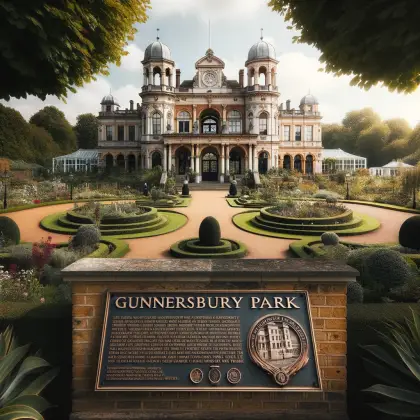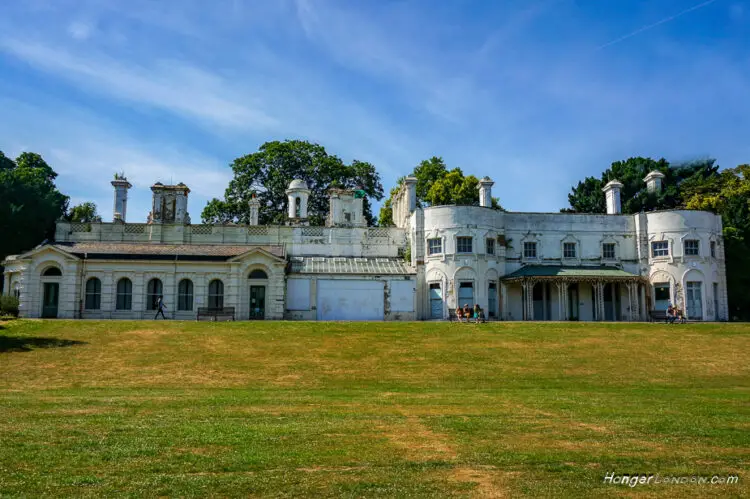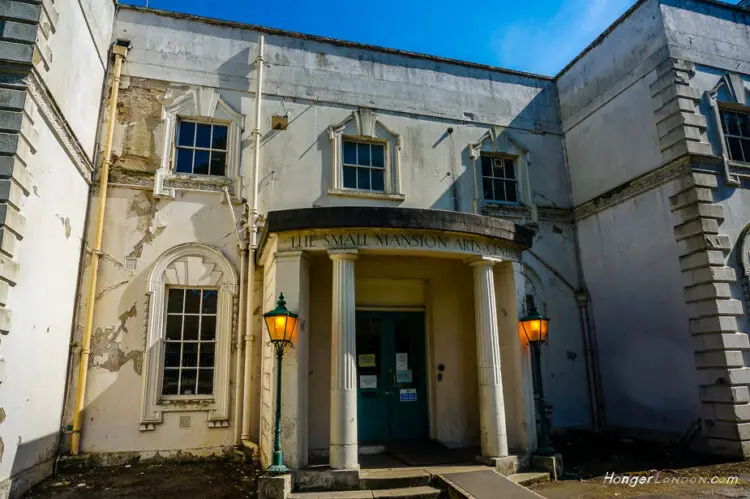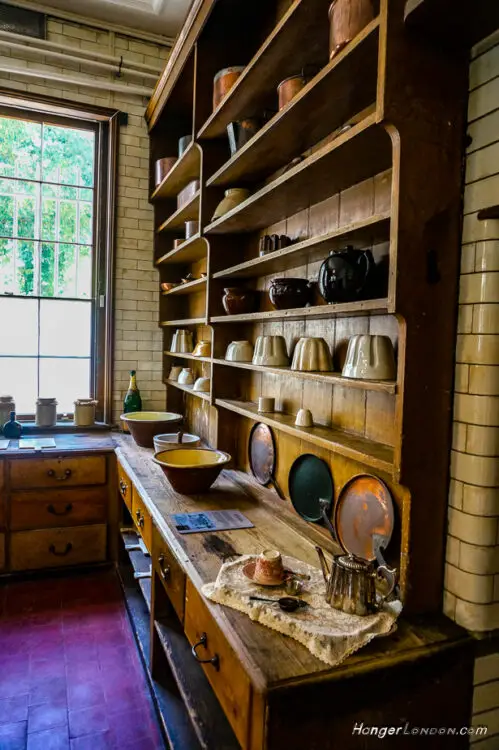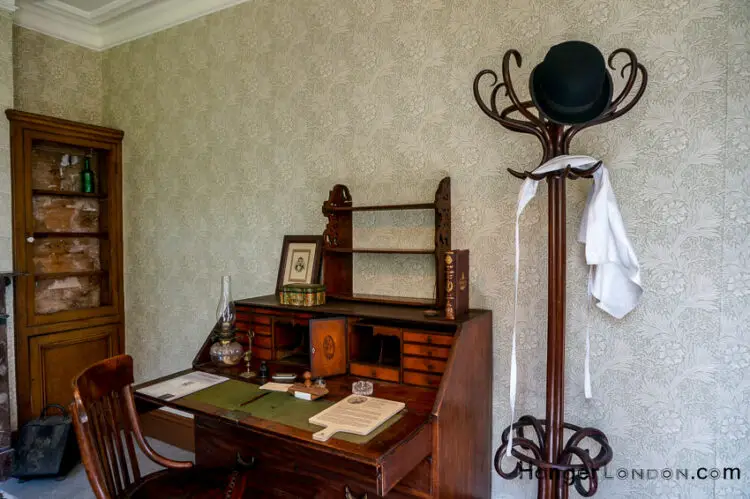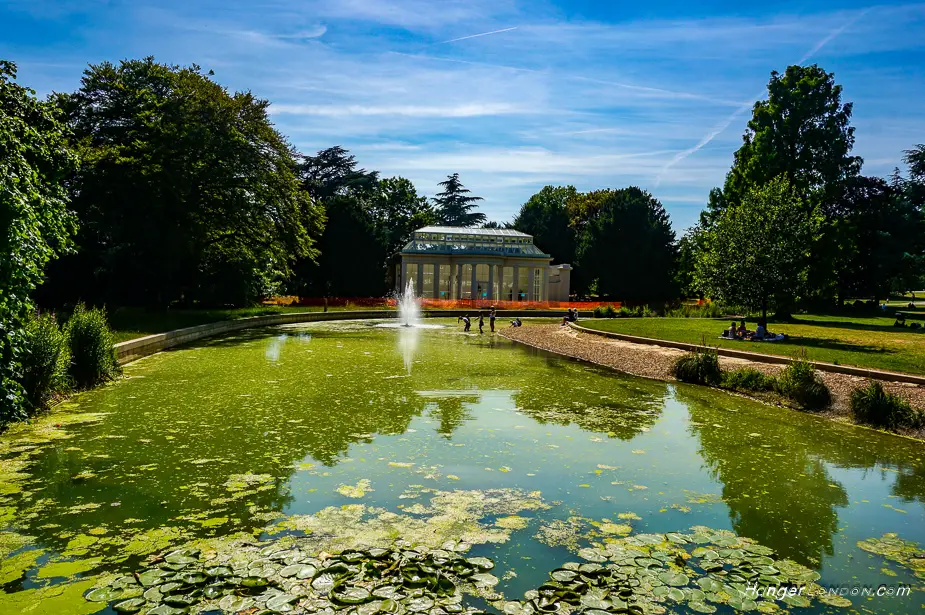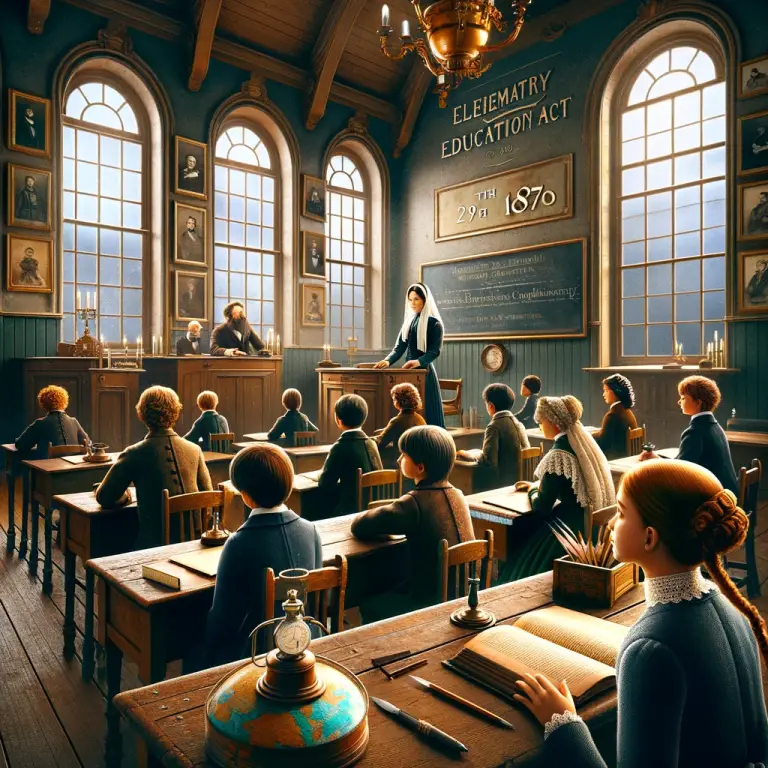Gunnersbury Park is a historic estate located in west London that has played a significant role in the city’s history for over 1000 years. Originally owned by the Bishop of London in the Middle Ages, it passed through various hands until it was purchased by the Rothschild family in the late 19th century.
The Rothschilds, one of the wealthiest families in the world, were known for their love of lavish estates and country houses. Gunnersbury Park, with its magnificent gardens and stunning architecture, was no exception. The family made many improvements to the estate, including the construction of a new mansion and the addition of a collection of rare and exotic plants to the gardens.
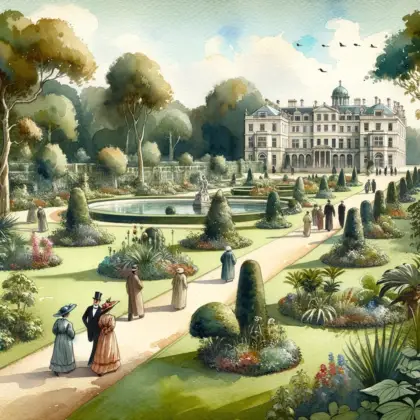
The Rothschilds were the last of the private owners before the then Minister for Health, Neville Chamberlain declared the park open to the public in the mid-1920s. We go behind the scenes and take a trip back through the Gunnersbury Park story its former owners and guardians.
Spanning between the Parish of Ealing and Hounslow, Gunnersbury Park as we know it today was called Gonyldesbury, or Gunnyldsbury in old records.
The park contains 22 grade II and grade II* at-risk listed buildings, across a site of 75 hectares, equivalent to 186 acres, though the purchase records in the 1920s list the estate at some 200 acres.
It is not too remote to consider the name Gunnersbury being derived from King Canute’s Scandinavian niece Gunylda, who was living in the area in the 1040s, just before the Normans took over the country. Translation perhaps ‘Manor House of a Woman called Gunnhildr’. Perhaps more research on the link between Gunylda and Gunnhildr who was the name of Queen Consort of Norway from the 10th Century (Comment below for thoughts on the origin of the name).
Amazon Pick of Books on Gunnersbury Park
1000 years of Gunnersbury Park
The first owners of Gunnersbury
In the 11th Century, the Bishop of London owned the land of Gunnersbury Park. The seat of Bishop of London was that of a senior member of the Church and one of the most powerful positions in the country. They leased the land to a series of very wealthy families from the 11th century up to the 19th century. For those of us today who are leaseholders of property on land, the terms of the lease may show the duration to expire in 99 years or 999 years, it is quite something to see this play out in British history, the land of Gunnersbury was being leased from Medieval Britain to relatively recent 19th-century Britain. This makes England’s history one enthralling journey of discovery.
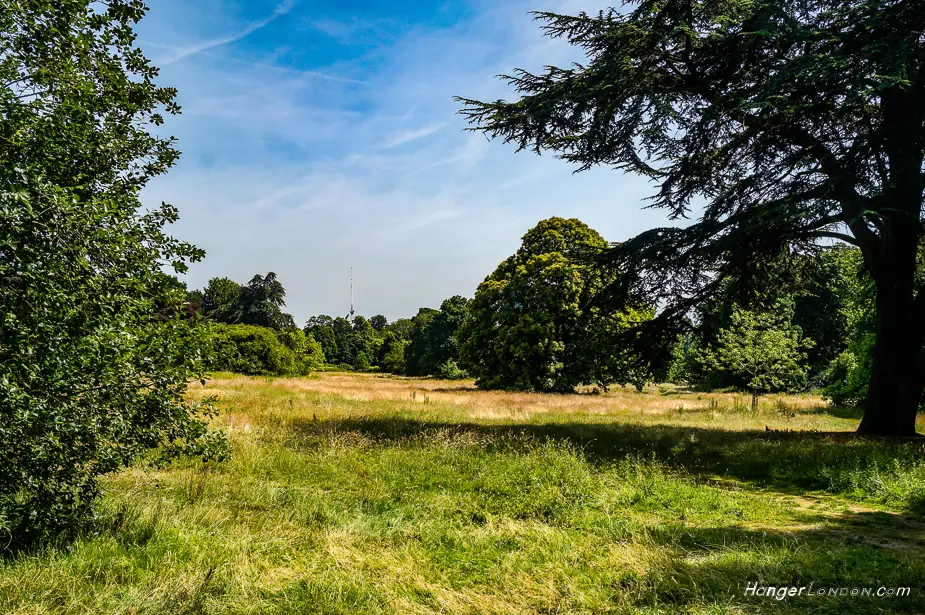
The Frowyk’s at Gunnersbury – 15th Century –
The first leaseholder in the 15th Century was Sir Thomas Frowick (Frowyke) of Gunnersbury, whose son (sir) Thomas Frowyk was born there and would study at Cambridge University and become Chief Justice of the Common Pleas. Sir Thomas’s (son) brother Sir Henry Frowyk inherited Gunnersbury which then descended to his daughter Elizabeth.
The Spelman’s at Gunnersbury – 1500s
Over a century later, Sir John Spelman, Judge of the King’s bench, who was notably present at the coronation of Anne Boleyn in June 1533 married Elizabeth, daughter, and heiress of Sir Henry Frowyk of Gunnersbury, brother of Sir Thomas Frowyk.
The Maynard’s at Gunnersbury – 1600s-1700s
Sir John Maynard was a lawyer and politician representing Totnes in both the Short Parliament of 1640 and the Long Parliament. Before his time in Parliament, Sir John gained a large legal practice on the Western Circuit and Westminster. Sir John during the reigns of Charles I, Charles II, James II, and William III played a prominent role in the judiciary. During Charles II’s reign, Maynard was the King’s Serjeant at Law. Amassing a large fortune Sir John Maynard purchased Gunnersbury in 1656, using the architect John Webb to build a Palladian-style house. John Webb was a pupil of the renowned architect Inigo Jones, who built Queen’s House in Greenwich, and his greatest achievement was building the banqueting hall on Whitehall. It was with some pedigree that John Webb came to work on building the Palladian-style House at Gunnersbury.
Architect John Webb styled the Palladian house on the designs of 16th-century Italian Architect Andrea Palladio (1508-1580), Villa Badoer In Fratta Polesine 1556, in the Veneto region of Italy.
Sir John Maynard died at Gunnersbury in October 1690 after a 4-day illness, his widow for many years carried on at the house marrying Henry Earl of Suffolk, the Earl died at Gunnersbury in 1709. 9 years later his son and heir died, followed by Countess Dowager in 1721. Sir John Hobart who married Elizabeth, the niece of Sir John Maynard became the property owner.
Henry Furness at Gunnersbury – into the 1700s
Daniel Defoe the author of Robinson Crusoe and a Gunnersbury visitor wrote:
“A tour thro’ the Whole Island of Great Britain” 1724-1727, referred to Gunnersbury park, 1724. ‘the sun never shines on it after 2 pm’
The Rich merchant, MP, and Art collector, Henry Furnese purchased Gunnersbury House in 1739/40 from Sir John Hobart.
The German-born composer Handel
Handel was a frequent visitor to Gunnersbury House in the 1740s, by the invitation of Furnese, Handle commented on the option of going to the seaside or drinking fine wine at Gunnersbury.

Henry Furnese did not marry and died on 30th August 1756. The property remained in the hands of the family until Farnese’s sister, Elizabeth Pearce, sold it to Princess Amelia

Princess Amelia at Gunnersbury – the change begins
From around 1761 George II’s daughter, Princess Amelia started the development of the Gunnersbury sit dramatically. Improvements to the house and grounds. There is some thinking, that Amelia received the residence from her father because marriage plans had not worked out. Amelia put the drive and finances into the house, landscaping other developments over the 25 years she lived there. We believe Amelia brought changes such as the round pond, stable yard, kitchen garden, orchard, and orangery. Other significant additions were the purchase of more land in 1770 and 1785.
Rather oddly some might say, they built Princess Amelia Bathhouse in the early 19th century; they uncovered this in an archaeological and historic building investigation which uncovered foundation methods from the late 18th and 19th centuries.
Princess Amelia died in 1786.
Gunnersbury Park For Sale 1786-88
The estate remained unsold for 2 years while they advertised it on the market before Col Gilbert Ironside bought it when it eventually sold at auction. The next 6 years saw Gunnersbury change hands through Walter Andrews Stirling (1790s. In 1794) and then onto to Henry Crawford, who then sold it to the next major chapter in Gunnersbury history, new owner John Morley.
John Morley – Demolition of Gunnersbury House and the Tale of 13 Plots
John Morley purchased the estate at the turn of the 1800s with big plans. The most significant was the demolition of Gunnersbury House, Webb’s mansion, the home of everyone since Sir John Maynard was to be raised to the ground.
The next phase in the development was the divide of the land into 13 plots. In 1801 the Palladian house was no more, architectural drawings were all maintained, and the land was now divided and for sale.
2 New Gunnersbury Houses – 1 Large and 1 Small
They built 2 new houses at Gunnersbury, one was large and one was small and both remain today but sadly the pre-19th-century mansion is no more because of the demolition. More twists and turns of owners followed.
Gunnersbury House, the Smaller House
A gentleman from Westminster, a timber merchant by trade, Stephen Cosser purchased Lot 1 in 1802 and built the smaller house which became known as Gunnersbury House. Cosser died in 1806 and Major Alexander Morrison purchased the house in 1807
Gunnersbury Park House, the Larger House
The Architect Alexander Copland purchased all the lots except 3 by 1802 and made developments over the next 6 years where he built the larger mansion, with the input of Architect Smirke, this became known as Gunnersbury Park House. Copeland and his wife gave elaborate functions at the house. They continued the trend of entertaining guests at the house, not too dissimilar to the parties 50 years earlier in the previous Gunnersbury House built by Webb. Alexandra Copeland started the Pinery where Pineapples were grown. Copeland died in the Summer of 1834. Smirke was one executor of Copeland’s will. In 1835 J.C Loudon, is thought to have developed and landscaped the gardens further.
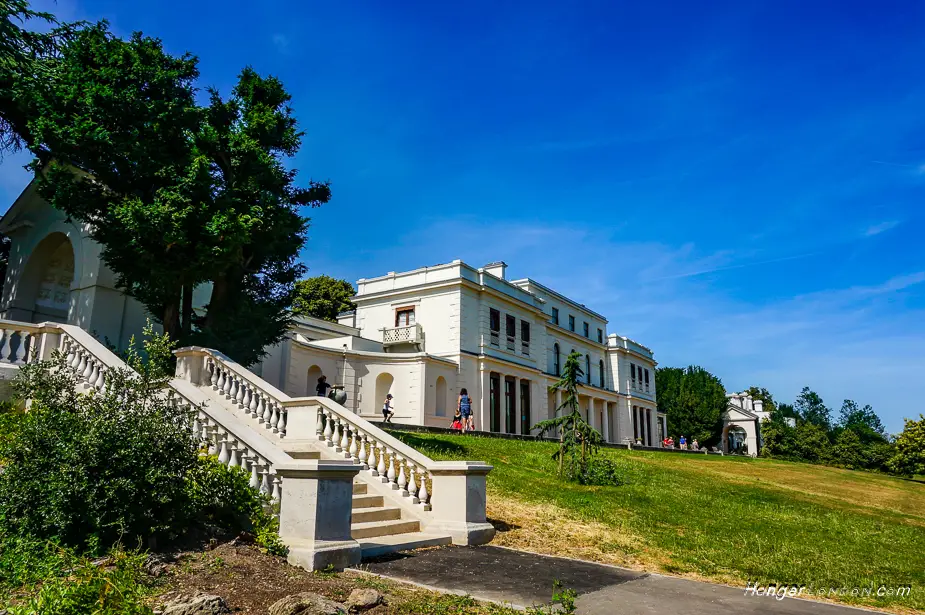
Gunnersbury for Sale again 1835
When the “For Sale” advert for Gunnersbury Estate went up, on 19th May 1835, it used enticing language. A wealthy German Jewish businessman, financier, and banker noticed the ad:
“Most enviable property”, “it’s superior arrangement and proximity to the Metropolis” “residence for a nobleman, minister of state, or family of the first description”.
The arrival of the Rothschilds at Gunnersbury Park
In 1835 Nathan Mayer Rothschild, Son of Amschel Rothschild who started the merchant banking empire in Frankfurt 30 years earlier, purchased 86 acres of Gunnersbury Park for the sum of £13,000. Nathan is also the Founder of a Merchant Bank and a stock exchange member in London.
From around 1804 to 1808 Nathan’s presence in London was well-established, he moved there from Manchester. His father gave him £16,000 and some surplus for marriage. He Married Hannah Cohen in 1806. To get an impression of Rothschild’s status and influence, by 1809 the Rothschilds were loaning money to the UK Government to help finance the war against Napoleon. Then into the 1820s loaning money to other European states. Other secret UK Government loans involved the Rothschilds, which provided finance for many major situations.
One thing that can be associated with the Rothschild Dynasty throughout time, was their input to charity work and connections with local tradespeople, causes, and the community. The connection with the Gunnersbury area also enjoyed their tradition of reaching out.
Improvements to Gunnersbury would start before the family could move in. The plans detailed a large glass conservatory designed by Smirke. Today one can visit the Chef’s office in the house which is not a room you find that often in open houses. They added the stables in 1836. They completed the North Lodge plans in early 1836. They did the Orangery plans in the spring of 1839. Smirke also designed the main Grand Staircase in the main house. Others have mentioned its stucco exterior and Inspirations from the French neoclassical style.
Interior shots from walking through the public access Museum
The Long Gallery
The Long Gallery in the main house has a painting on the ceiling of E.T. Parris’s “The Four Seasons” dating around 1836. They added a billiard room. The plans show the largest rooms; the Drawing room, Dining Room, with a Long drawing room that joins the two. The Entrance Hall, Parlour, a conservatory in a crescent shape by the Drawing room.
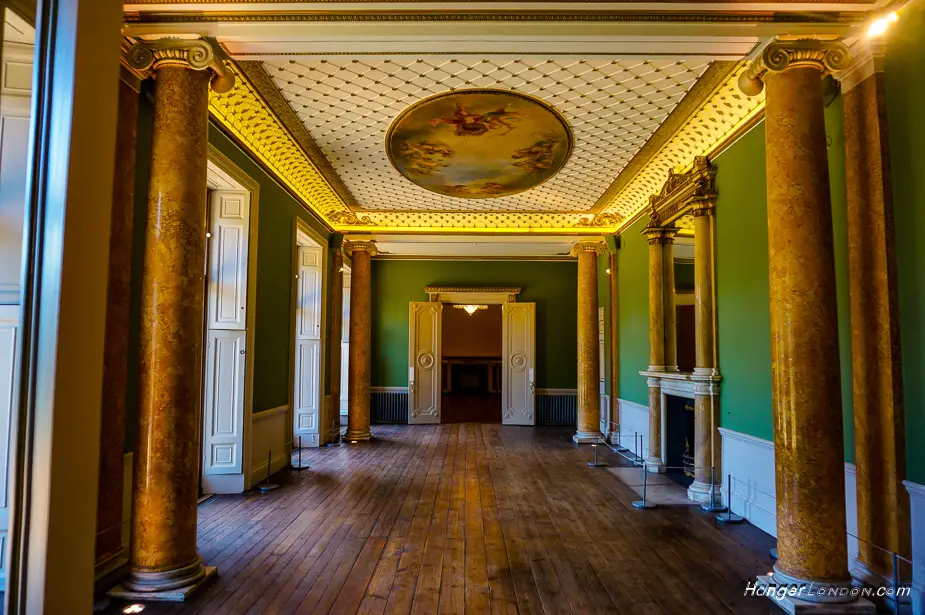
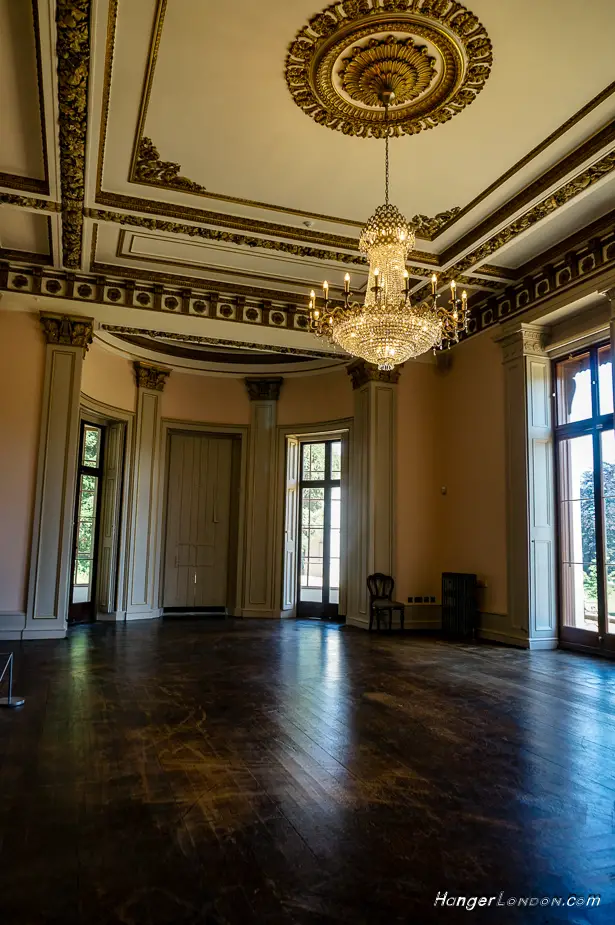
Gunnersbury Park, orangery
The death of Nathan Rothschild
Nathan Rothschild sadly died on the 18th of July 1836. Leaving his wife and son to carry on the grand renovation plans including hothouses, where they could grow exotic fruit and flowers, and the purchase of more land.
Widow Hannah Rothschild and Smirke carried on the upgrades and developments.
Mrs. H Rothschild was very keen to continue to raise the Rothchild family profile within the important and influential nobility and society of the times. Nathan was perhaps less indulgent, less of a showboat, he was an important financier, not to be seen as someone frivolous with spending. The times were changing, Victorians bought fashions, fads and inventions, and cosmopolitan wonderment for other countries and botanical interests. The raved-about social functions which then occurred at Gunnersbury left an impression not only at the time for the Rothschilds and Gunnersbury but also enough to leave a trail for modern-day people to read about.
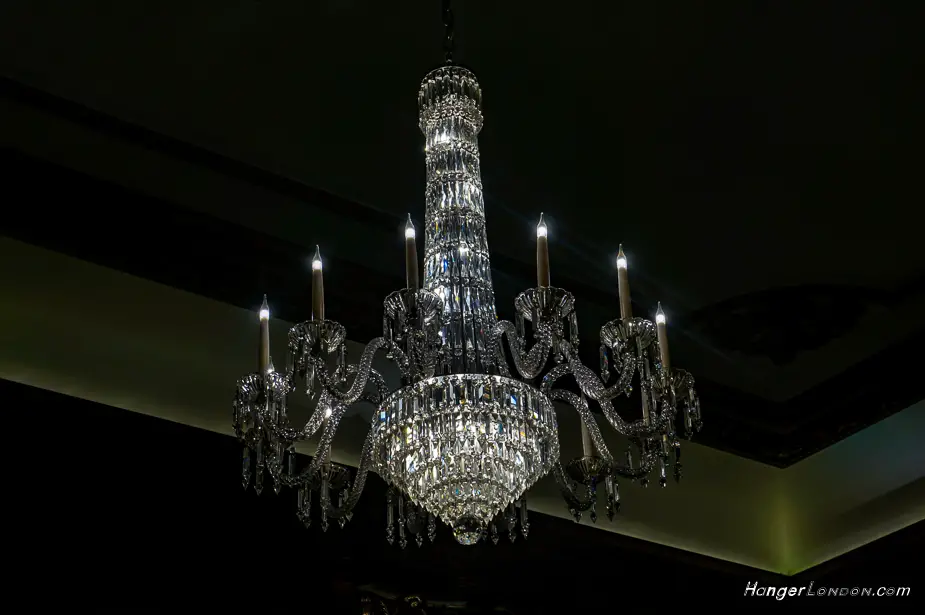
Spectacular fêtes were elaborate festivals at Gunnersbury, whilst Hannah Rothschild managed the estate. These social gatherings were talked about and documented by her social-climbing guest list. Embellishments, decorations, music, balls, food & refreshments, garden strolls, and entertainment. One such occasion in July 1838 a Breakfast Fête at Gunnersbury for some 500 guests costing £2,000. Italian music from well-known Grisi & Persians attended, waltzing on the lawns, and coffee at the temple. Ambassadors, Dukes, Princes. In 1843 even Benjamin Disraeli attended such a Fête.
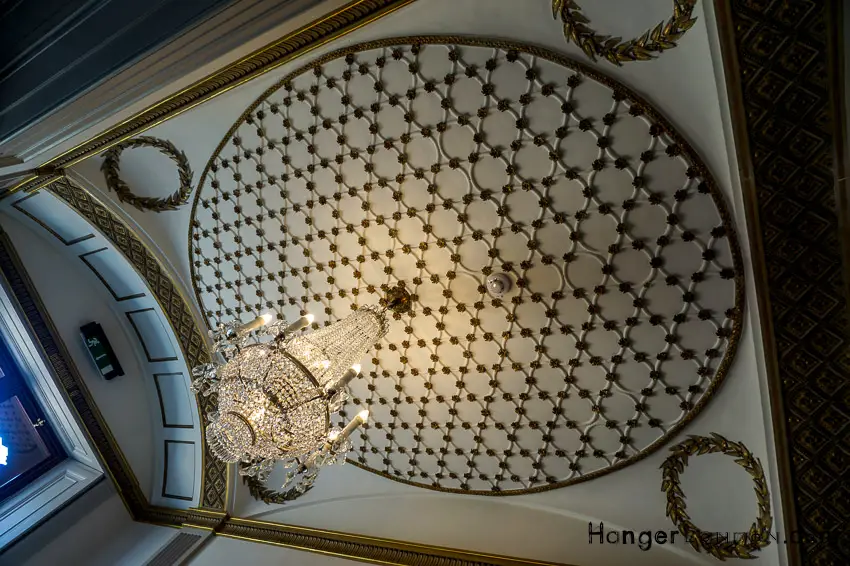
Hannah Rothschild Widow of Nathan Rothchild Dies
Hannah Rothschild died in 1850. They left the estate to her 4 sons. Lionel, Anthony, Nathaniel, and Mayer. The Other brothers gave up their shares to Lionel who then owned the Estate from 1851-1879.
Lionel Rothschild, the second Gunnersbury master of the Estate of 1851
Being a first in those times. Lionel Rothschild fought and became the first practising Jewish MP without having to swear the Christian oath which was normal practice in those times. A dream he made a reality by the end of July 1858.
1855 the Gardeners Chronicle raved about the Cedar trees, rare conifers at Gunnersbury.
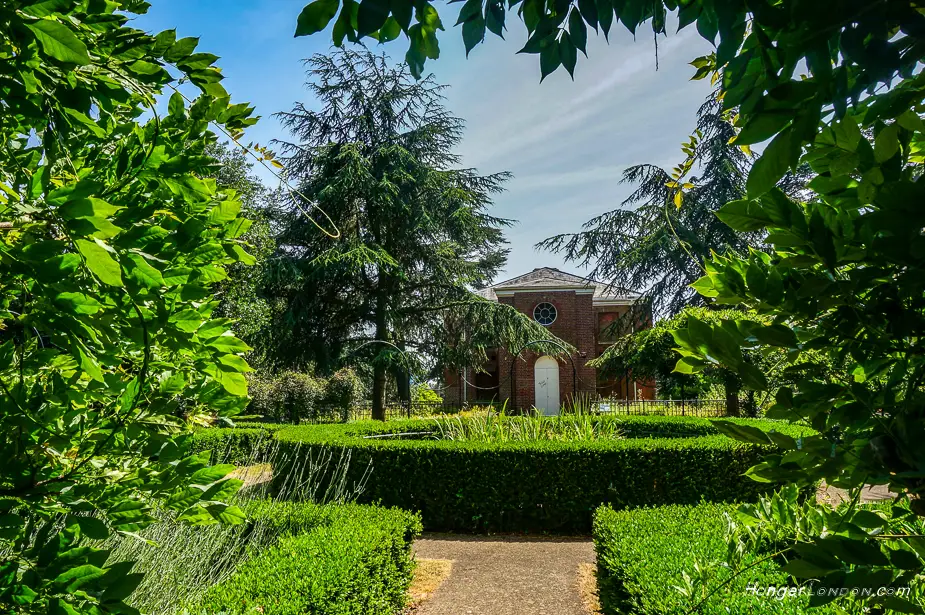
Lionel’s eldest daughter Leonora was a striking beauty, a well-known beauty icon of that era. Queen Victoria, even commented upon her good looks. 4/3/1857 Leonora was to marry her French cousin Alphonse de Rothschild. The British-based Rothschild males in the family had permission to use the nobility status Von Baron, though it is fair to say some did not seem to insist on being known by that title.
An extension to the dining room happened and they decorated the house interior for the wedding with plants. They displayed wedding gifts around the skylight. We can view the skylight today. See photo.
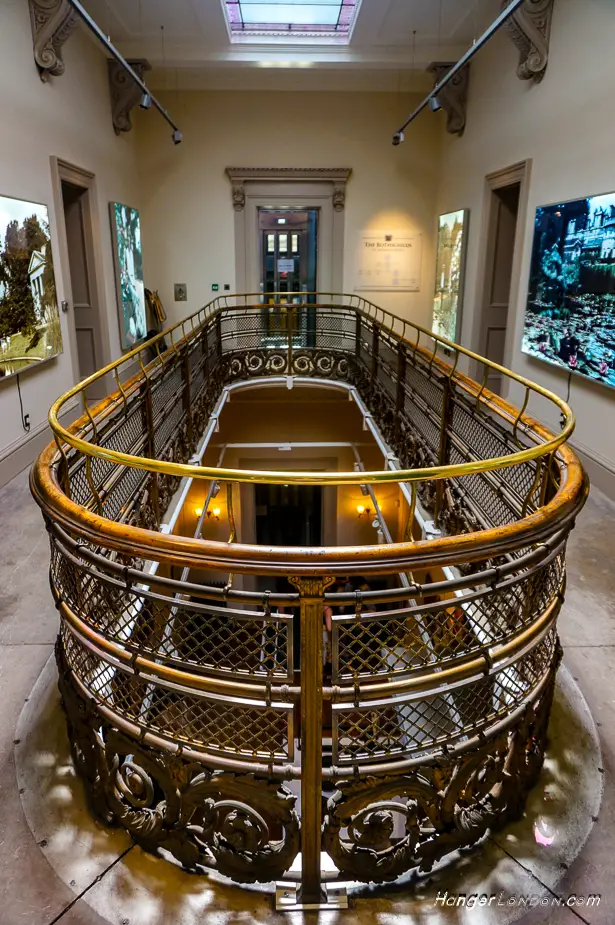
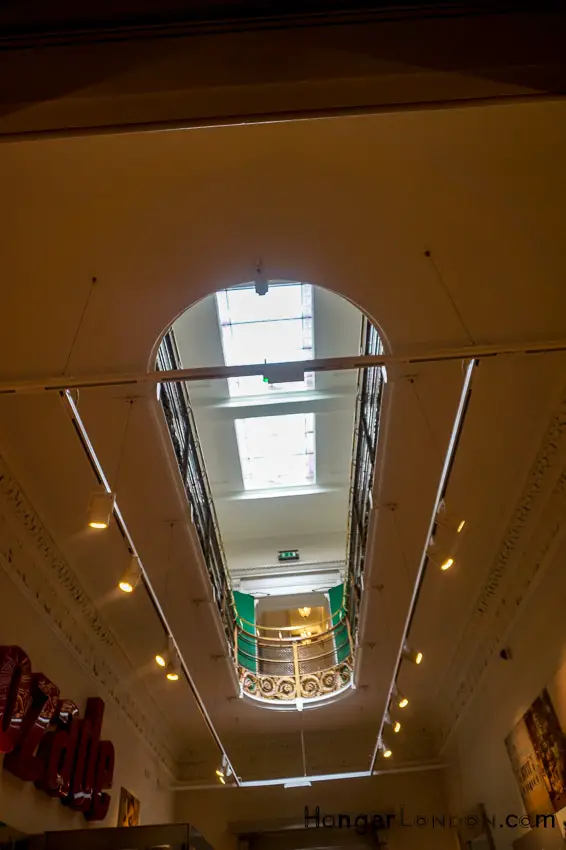
This Wedding was a Jewish-style Ceremony. The Bride wore Belgian lace, orange blossoms, lilies of the valley, white roses, blue satin, and velvet ribbons. 16 Bridesmaids. Details of this event were in the Illustrated Times and the Illustrated London News. A Banquet and Ball with many Important guests the Cream of society.
Lionel was friends with King Edward VII and took his photo in Autochrome in 1909 whilst the King was in his Highland costume whilst in Scotland. This photo is on display in Gunnersbury Museum, at Gunnersbury Park. Autochrome was the first colour photo method available. I had only discovered this Photo around 2009 from a Rothschild descendant.
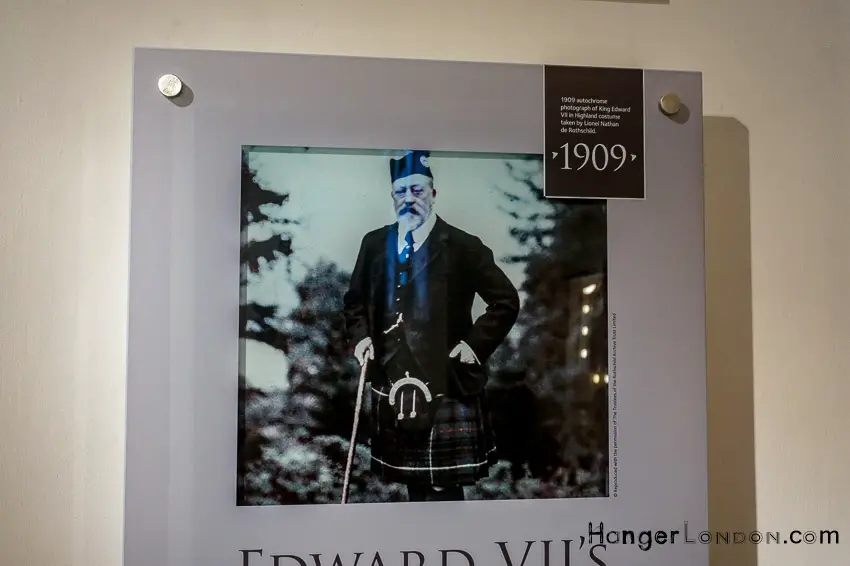
Paintings, furniture, and antiques were other treasures Lionel collected.
1858 Disraeli commented upon the Rothschild’s Banquets “Splendour that couldn’t be surpassed”.
Rothschild’s 1870s Gunnersbury Park
1872 King Leopold of Belgium II attended a Rothschild Dinner & concert. Lionel’s son is named Leopold and is thought to be named after Leopold II’s father Leopold I who is related to British Queen Victoria.
Gunnersbury Park Gardens in the 1870s
The Pulham design styles appear elsewhere at Gunnersbury from around 1874. Speculation that the old tile kiln building into a Gothic-inspired tower boathouse folly had some input them. It’s uncertain but the other ornamental structures that the Pulhams may have had some part in, are; A mimicked Gothic Ruin structure, at the old stable block. A castle-style entry archway to a lodge. It is also thought a basement-type fernery around the outside Bathhouse, was also the Pulham style.
- Lionel Rothschild of Gunnersbury died June 1879
- Charlotte Rothschild Widow of Gunnersbury died in 1884
- 1889 the Rothschilds purchased a smaller house and land for guests and family.
The history of the tower in Gunnersbury Park
On the southern shore of Potomac Lake, a mid-19th-century Gothic Folly tower (a building constructed primarily for decoration). The designated site name is Gothic Boathouse and Pavillion on the south shore of Potomac Fish Pond, Gunnersbury Park.
Gunnersbury in the 1900s and Leopold Rothschild
Leopold took over the estate but did not get total control till 1901. He continued with plants and also had the love of horses and horse racing. He carried on the Horseracing stud at Gunnersbury.
Reading around, it is noted, in 1900 Gunnersbury House now had electric lighting.

The Rothschilds had plans for a Japanese-inspired garden, which James Hudson is noted for in around 1900 – 1901 for Leopold Rothschild. Miniature features. Water ponds for waterlilies, In particular, it was admired for their Bluewater lilies, musk, Chinese palm, bamboo, Teahouse, lanterns lit with electricity, stepping stones, Chinese and Japanese style plants, a bamboo style bridge, inspired by perhaps Bellagio Japanese Gardens on the Lake Como
In 1906 Came the Heath garden behind the Japanese area, sunken walkway, rocks, and ivy.
In 1909 Leopold carried on the tradition and gave a huge function in honour of the Chief Rabbi reaching 70. 5,000 people came many Jewish immigrants.
1912 King George the V and Queen Mary attended Leopold’s next major social function a mass garden party “League of Mercy”. Two thousand guests of nobility and importance dressed in all their finery in aid of King Edwards VII’s fund.
1911 Leopold Rothschild son of Charlotte who had a passion for Orchids, gave a Fabergé crystal vase of orchids to King George V for his coronation in June of that year.
Gunnersbury and the Great War 1914-1918
It has not been easy to find out about what happened at Gunnersbury Estate during the War. But the Rothschilds were busy with the war effort.
Lionel, Anthony Gustav, and Evelyn were the sons of Leopold Rothschild. They played their part in active service that took different forms.
The King persuaded Lionel to serve his country and remain running finances at New Court London. Gold Bullion and the Mint were under the Rothschild’s care. Lionel also set up a recruiting office in 1915 and established a pathway for Jewish men to join up, also providing Chaplains, welfare, and lodging. The Rothschilds sent aid to the troops on the front and provided funds for the Red Cross Hospital.
Evelyn Rothschild Was wounded on the western front but he went straight into the action, recovered went back to service, and died for his country in south Palestine in 1917.
Gustav Anthony although wounded Gallipoli was decorated and survived the war with the title of Major of General Staff.
The Last Rothschild at Gunnersbury
Nathan’s Grandson, Son of Charlotte, Leopold de Rothschild died in 1917. The Estate was sold by the family to the Local Authority. It has been written that the Widow Rothschild wanted the house to be in memorial to her husband and that the sale was on the condition it be used for leisure and a certain amount of land kept as the park open land for the public.
The final sale of Gunnersbury Park, Once a lifetime
In 1925 Queen Mary and King George V opened the Great West Road. The travel route to the West of the Country to places like Bath had to pass through Brentford, which then became congested. This road was going to bypass the town to ease bottleneck jams. The Great West Road was 8 miles long and went from Chiswick High Road near the Kew Bridge area, at the back of the park. It went through Isleworth and then Bath Road was joined again, past Hounslow Barracks station. The price of the land then went up because it was seen as a development area, so became an opportunity.
Brentford’s Golden Mile saw art deco buildings being created, as trade and interest grew in the area. The councils wanted the Rothschild’s land for different reasons, a public park, with Acton and Ealing. In opposition to Brentford, who wanted the park estate land for housing developments. Popes Lane and Lionel Road were sold off so that the councils could repay loans they had to take out to be able to afford the parkland.
They then sold part of the estate off. In 1926 the London Boroughs of Acton and Ealing purchased both houses and 186 acres of land.
The 22 Listed buildings in Gunnersbury Park
- Gunnersbury Park House (Large Mansion )
- Gunnersbury House (Small Mansion)
- Temple
- Orangery
- EAST/ West Stables
- Gothic Ruins
- Lamp Stands
- North Lodge
- East Lodge
- West Lodge
- East Lodge Archway
- South East Archway
- South West Archway
- East Archway
- Bathhouse and Gothic Screen
- Potomac Tower
- Boundary Wall
- Pope’s Lane Entrance Gates
- Kitchen Garden wall
- Water Features:
- Potomac Lake
- Horseshoe Lake
Where is Gunnersbury Park
Gunnersbury Park is located in West London, in the London borough of Hounslow,
The closest Tube Station to Gunnersbury Park (Zone 3)
Acton Town tube station on the Piccadilly and District Lines is the closest tube station to Gunnersbury Park’s main entrance and museum. The next stop on the line, South Ealing station is also an option when approaching the back of the park, but remember the park is encircled with entrances.
The Closest Overground station to Gunnersbury Park
The closest Overground station is Gunnersbury, closely followed by South Acton station, both in Zone 3. Also options at Kew Bridge on the M4/A4 North Circular
The 10 public entrances into Gunnersbury Park
At the Main Entrance, North Gateway on Popes Lane, two lantern structures appear on the posts, with its ornate iron gate also Grade II listed.
There is another entrance, also on Popes Lane, not very far from the main entrance is a drive-in entrance to the car park. It’s closer to bus stop 65 which came from the direction of Acton Central. Walk back in the direction you came with on Pope’s Road as the bus will pass the main entrance first. This is more suitable if on foot. The Car park entrance is closer to the playground area.
- There is an entrance also further round on Popes Lane B4491 opposite Elderberry Rd
- There is an entrance on the corner of the park further down the B4491 where it meets the corner of Lionel Road
- There is an entrance/exit in the stone wall onto the North Circular road
- There is an entrance on Lionel Rd N. BY the Bridge Great West Rd M4 / A4 where Lionel Rd S. Meets Lionel Rd N.
[mappress width=”100%” height=”400″ adaptive=”true” mapid=”9″]

